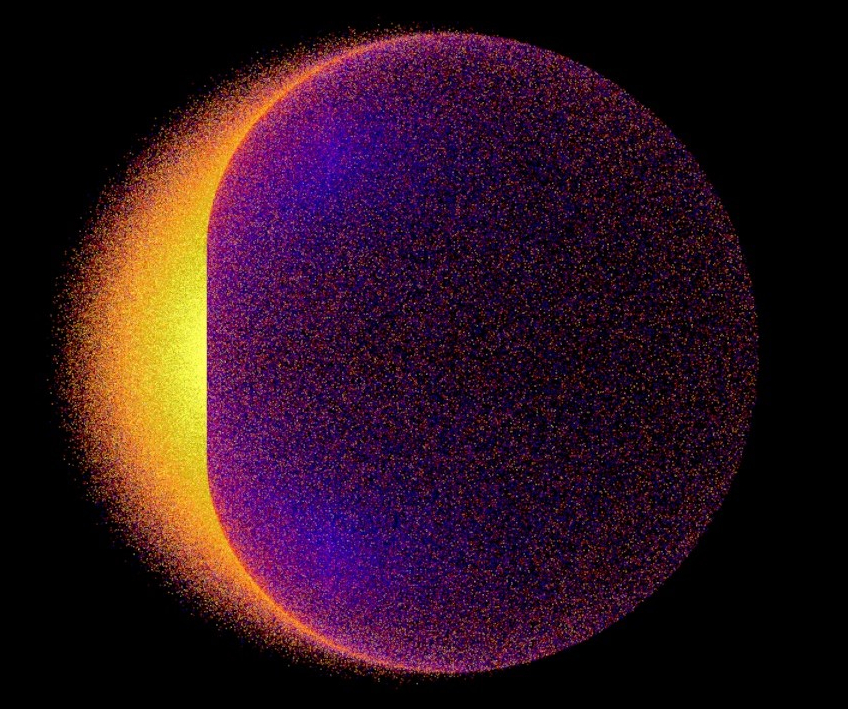
 Credit: NASA's Goddard Space Flight Center; J. Schnittman
Credit: NASA's Goddard Space Flight Center; J. Schnittman
Dark Matter Illuminating Black Holes
Black holes in the Milky Way and in external galaxies have been studied from emission produced by normal matter swirling around them, and sometimes shot out as enormously powerful jets blasting into the galactic or even intergalactic environment. Normal matter (the stuff we're familiar with, that composes our bodies and everything we see around us) which gets too close to a black hole will heat up to incredible temperatures and glow brightly, producing emission from the radio to the gamma-ray bands. But as we know now, most of the matter in the Universe is in the form of mysterious, so-called "dark matter". Dark matter emits no electromagnetic radiation, so it has only been detected via its gravitational effect on normal matter. Scientists speculate that dark matter is composed of sub-atomic particles called a WIMPs (for weakly interacting massive particles). If there are WIMPS, there should be anti-WIMPS, the anti-(dark-)matter form of dark matter. When a particle and its anti-particle collide, they convert their mass into pure energy in the form of electromagnetic radiation. This so-called annihilation radiation is very energetic, since, as Einstein showed us, a small amount of mass can produce an enormous amount of energy. Detection of WIMP annihilation radiation would be a breakthrough in our understanding of dark matter. Unfortunately, in normal space, the chance of a WIMP and anti-WIMP colliding is extremely small. But, as shown by new computer simulations, in the space very near a rapidly rotating black hole, the chances of WIMP/anti-WIMP collisions are greatly enhanced. WIMP-anti-WIMP annihilation, if it occurred in the distorted spacetime near the spinning black hole, would produce a bright glow of very high-energy gamma radiation which could, in principle, be detected by gamma-ray telescopes. The image above simulates the asymmetric glow of WIMP annihilation radiation very close to a spinning black hole. Thus, one day it may be possible to use gamma-ray emission from black holes to shed light on dark matter.
Published: June 29, 2015
<
HEA Dictionary ● Archive
● Search HEAPOW
● Other Languages
● HEAPOW on Facebook
● Download all Images
● Education ● HEAD
>

Each week the HEASARC
brings you new, exciting and beautiful images from X-ray and Gamma ray
astronomy. Check back each week and be sure to check out the HEAPOW archive!
Page Author: Dr. Michael F. Corcoran
Last modified Monday, 26-Feb-2024 17:20:22 EST


